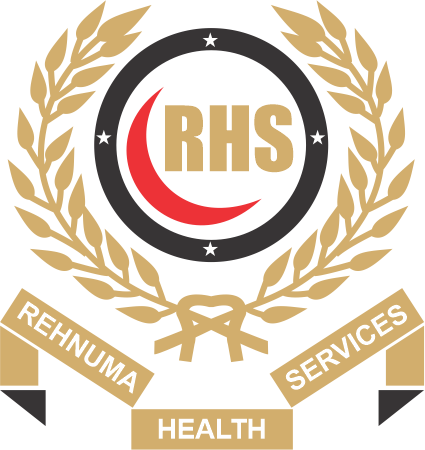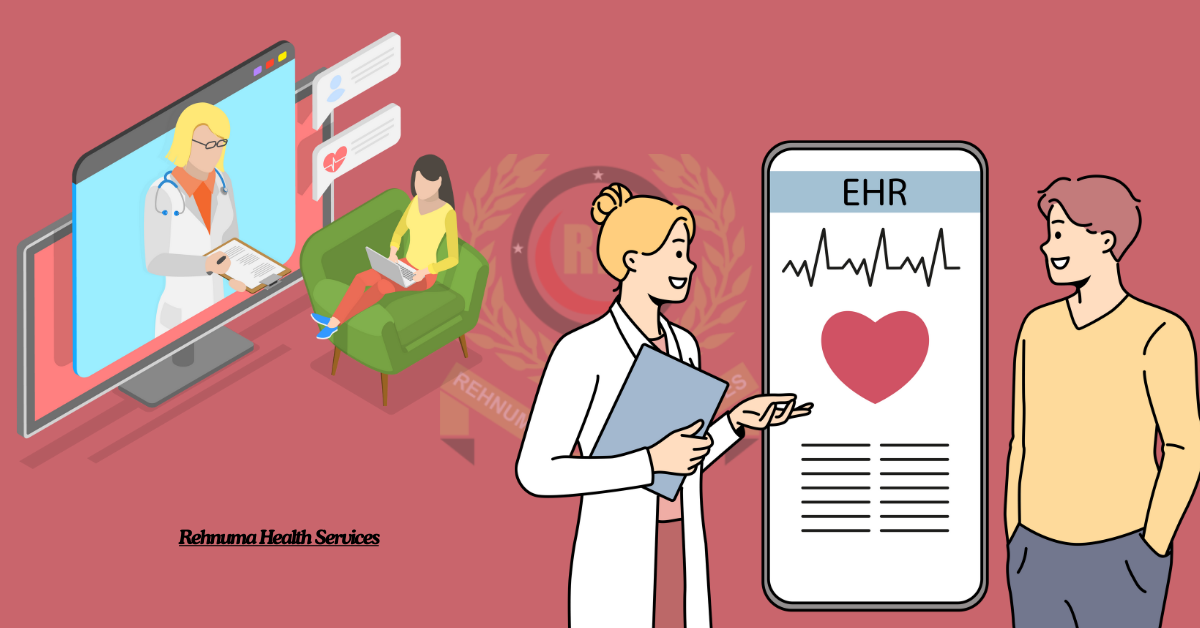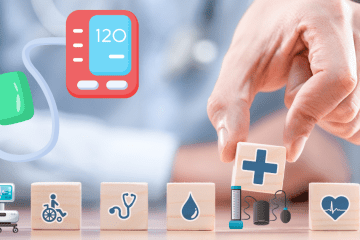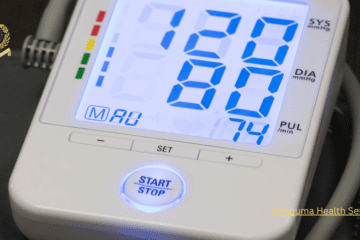In the rapidly evolving healthcare landscape, technological advancements have brought innovative solutions that enhance efficiency, accuracy, and the overall patient experience. One such transformative technology is the Electronic Health Record Systems (EHR). For healthcare providers worldwide, EHRs are becoming essential tools that streamline operations, improve patient care, and ensure better health outcomes.
At Rehnuma Health Services, serving the communities of Islamabad and Rawalpindi, we recognize the immense value that EHR systems bring to modern healthcare. In this comprehensive guide, we will explore the history, global trends, and benefits of EHR systems, how they work, and why they are indispensable for healthcare providers and patients alike.
1. What are Electronic Health Record Systems?
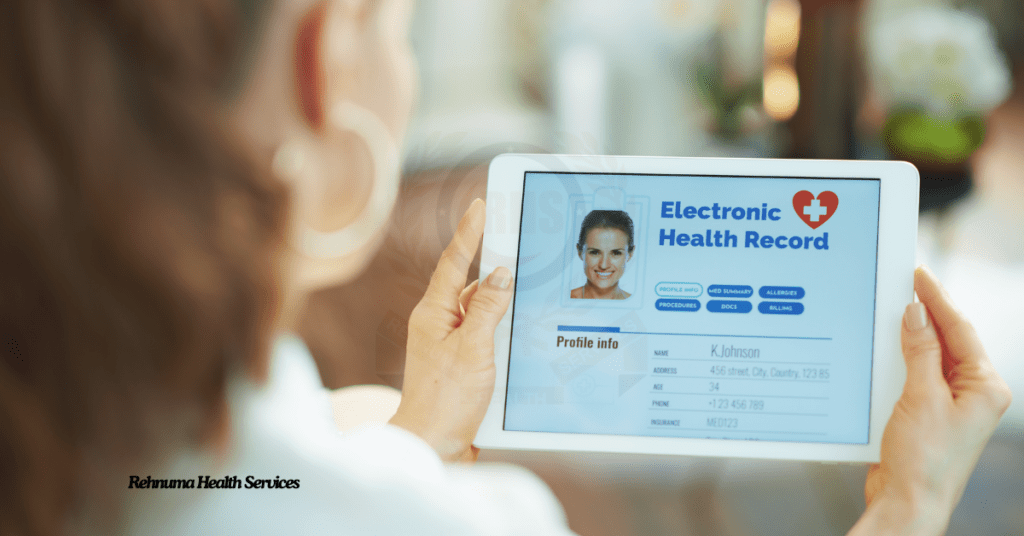
An Electronic Health Record (EHR) is a digital version of a patient’s paper-based medical history, meticulously compiled and stored in a centralized system. It contains a comprehensive record of patient information, including medical history, diagnoses, medications, treatment plans, immunization dates, allergies, radiology images, and lab test results.
Unlike traditional paper records, EHRs are accessible in real-time by authorized healthcare providers, ensuring that patient data is readily available whenever and wherever it’s needed.
2. How Do EHR Systems Work?
EHR systems function through the integration of various software applications that capture, store, and process patient information in a digital format. Here’s a simplified breakdown of how they operate:
- Data Input: Healthcare providers enter patient information into the EHR system during consultations, treatments, and follow-up visits.
- Storage and Security: The data is securely stored on servers or cloud-based platforms, encrypted to protect patient privacy.
- Access: Authorized personnel, such as doctors, nurses, and other healthcare staff, can access the data when necessary, providing them with up-to-date information.
- Updating: Patient records are continuously updated as new information becomes available, ensuring a comprehensive and accurate medical history is maintained.
In essence, EHRs digitize the entire patient care process, allowing for faster, more accurate, and more secure handling of medical data.
3. The Evolution of Electronic Health Record Systems
The concept of recording patient health information has been around since ancient times, albeit in much simpler forms like handwritten notes or physician-dictated summaries. However, the idea of digitizing these records began to take shape in the late 20th century, in tandem with the rise of computers and digital technologies.
3.1 The Early Days of EHR Development
In the 1960s and 1970s, hospitals and medical institutions began to explore computerized systems for managing patient information. These early systems, known as Clinical Information Systems (CIS), were primarily used for recording specific data points like laboratory results or radiology reports. At the time, the focus was more on financial and administrative data management than clinical data.
It wasn’t until the 1980s and 1990s that Electronic Medical Records (EMRs) gained prominence. EMRs allowed healthcare providers to store medical information electronically but were largely confined to individual clinics or hospitals. These systems weren’t designed for data-sharing across different healthcare facilities, limiting their ability to provide a comprehensive view of a patient’s medical history.
3.2 Transition to EHR Systems
The need for more comprehensive, interoperable systems led to the development of Electronic Health Records (EHRs) in the early 2000s. EHRs, unlike EMRs, are designed to be shared across multiple healthcare providers and institutions.
The integration of EHRs enabled the real-time exchange of information, making patient data available at every touchpoint in the healthcare continuum, from primary care physicians to specialists, hospitals, and home care services like those provided by Rehnuma Health Services.
3.3 Government Initiatives and Global Adoption
Many countries, including Pakistan, have recognized the value of Electronic Health Record systems in improving healthcare delivery and have implemented initiatives to encourage their adoption. In the United States, for example, the Health Information Technology for Economic and Clinical Health (HITECH) Act of 2009 incentivized healthcare providers to adopt EHR systems, resulting in widespread use.
Similarly, countries across Europe, Asia, and the Middle East have also seen a growing trend toward EHR adoption as part of broader healthcare digitization efforts. In Pakistan, the digital transformation of healthcare, especially in urban centers like Islamabad and Rawalpindi, is slowly gaining momentum as both private and public healthcare providers invest in technology to improve service delivery
4. The Benefits of Electronic Health Record Systems
EHR systems offer a wide range of benefits to both healthcare providers and patients, making them a crucial aspect of modern healthcare. Below are some key advantages:
4.1 Improved Patient Care
EHR systems enable healthcare providers to access a patient’s complete medical history instantly. This means that when patients visit doctors, the healthcare professionals have all the information they need, including past diagnoses, treatments, allergies, and medications. This comprehensive view allows for more accurate diagnoses, reduced medical errors, and better-informed treatment decisions.
4.2 Increased Efficiency
Paper records are cumbersome to manage and can easily be misplaced, leading to inefficiencies. EHRs eliminate the need for paper files, streamlining administrative tasks like scheduling, billing, and reporting. With EHR systems, healthcare providers can manage larger volumes of patients more efficiently, leading to improved service delivery and reduced waiting times.
4.3 Enhanced Data Sharing
One of the most significant advantages of EHRs is the ability to share patient data across multiple healthcare providers. For instance, if a patient moves from Rawalpindi to Islamabad, their medical history can be easily accessed by their new doctor. This improves continuity of care and ensures that patients receive the appropriate treatment, regardless of where they are.
4.4 Better Coordination Among Healthcare Providers
When healthcare providers can share patient information efficiently, care coordination improves. Whether a patient is receiving care from a general practitioner, specialist, or emergency room, EHRs ensure that all medical professionals involved in the patient’s care have access to the same information. This reduces the risk of duplicate testing, conflicting prescriptions, or miscommunication.
4.5 Electronic Health Record Systems are Cost Savings
EHR systems reduce the need for physical storage space, paper, and administrative personnel for managing records. In addition, the enhanced efficiency of EHRs helps healthcare organizations reduce operational costs. For example, the automation of billing and insurance claims processing saves time and reduces errors that can lead to costly rework.
4.6 Real-Time Access to Data
With EHRs, authorized healthcare providers can access patient information in real-time, from any location. This is particularly beneficial in emergencies where immediate access to a patient’s medical history could be life-saving. In the context of home healthcare services, such as those offered by Rehnuma Health Services, caregivers can access and update patient records during home visits, ensuring seamless care delivery.
4.7 Improved Patient Engagement
Patients can be given access to their medical records through patient portals. These platforms empower patients to take a more active role in their healthcare by allowing them to review their test results, track their treatment progress, and even schedule appointments. Increased patient engagement often leads to better health outcomes as patients are more informed about their conditions and treatments.
4.8 Regulatory Compliance
EHR systems are designed to help healthcare providers comply with healthcare regulations, including the Health Insurance Portability and Accountability Act (HIPAA) and other local laws. Compliance is easier to maintain with automated features that protect patient privacy and ensure that all data is securely handled.
4.9 Advanced Analytics and Population Health Management
EHR systems collect vast amounts of data on individual patients and entire populations. This data can be analyzed to identify trends, predict health outcomes, and even suggest interventions that may improve patient care. Population health management becomes more effective as healthcare providers can track common health issues across different regions, age groups, and demographics.
For example, EHR data can help identify trends in chronic illnesses like diabetes or hypertension in a specific population segment.
5. EHR Systems and Clinical Research
One of the most exciting applications of EHR systems is in clinical research. The vast amounts of data collected through EHRs are invaluable for research purposes, helping to accelerate medical discoveries and improve treatment protocols.
5.1 Data Mining and Big Data Analytics
The structured and standardized nature of EHR data makes it an excellent resource for data mining. Researchers can analyze patient records to identify patterns, assess the efficacy of treatments, and explore the causes of diseases. The insights gained from this data can lead to breakthroughs in medical research and the development of new therapies.
For instance, researchers might use EHR data to study how different demographics respond to specific medications or treatments. This can lead to more personalized healthcare approaches, tailored to individual patients based on their unique health profiles.
5.2 Clinical Trials and Patient Recruitment
EHR systems also facilitate the recruitment of participants for clinical trials. Researchers can identify patients who meet the criteria for a particular study, based on their medical history, demographics, and treatment outcomes. This not only speeds up the recruitment process but also ensures that the right patients are selected, improving the reliability of clinical trial results.
In the context of Pakistan, where clinical trials for new medications or treatments may be conducted, EHR systems can play a critical role in connecting patients with research opportunities.
6. Real-World Use Cases of EHR Systems
EHR systems have already demonstrated their value in various healthcare settings. Here are some real-world use cases that illustrate the diverse applications of EHR systems:
6.1 Managing Chronic Diseases
For patients with chronic conditions like diabetes, hypertension, or asthma, EHR systems enable healthcare providers to closely monitor disease progression and adjust treatment plans accordingly. Patients can access their records through patient portals, allowing them to track their condition, view lab results, and communicate with their healthcare providers.
Many healthcare service providers offer specialized care for patients with chronic illnesses. EHR systems allow them to coordinate care across multiple healthcare professionals, ensuring that their patients receive the best possible treatment.
6.2 Emergency Care
In emergencies, having access to a patient’s complete medical history can be life-saving. EHR systems provide emergency care providers with real-time access to critical information, such as allergies, medications, and previous treatments. This information is crucial for making quick, informed decisions about patient care.
For instance, if a patient is brought to an emergency room in Rawalpindi, the attending physician can instantly pull up their medical history and begin treatment without delay, potentially saving lives.
6.3 Preventive Care and Screenings
EHR systems also support preventive care by reminding healthcare providers about routine screenings and check-ups. For example, a doctor may receive an alert through the EHR system reminding them to schedule a mammogram for a patient who is due for a breast cancer screening.
This proactive approach to healthcare helps catch potential health issues early, leading to better outcomes and reduced healthcare costs.
Click Here to get Home Healthcare facilities in Islamabad and Rawalpindi
7. Challenges in Implementing EHR Systems
While the benefits of EHR systems are evident, the implementation process is not without its challenges. Some of the most common obstacles faced by healthcare providers in adopting EHRs include:
7.1 High Initial Costs
The upfront investment required for EHR systems, including hardware, software, and training, can be significant. Smaller healthcare facilities may struggle with the financial burden of implementing these systems.
7.2 Training and Adoption
For EHR systems to be effective, healthcare providers and staff must be adequately trained. Resistance to change and the learning curve associated with adopting new technology can slow down the implementation process.
7.3 Interoperability Issues in Electronic Health Record Systems
In some cases, different healthcare providers may use different EHR systems that are not fully compatible with each other. This lack of interoperability can hinder the seamless sharing of patient data, negating one of the key benefits of EHR systems.
7.4 Data Security Concerns
Although EHR systems are designed with robust security measures, they are still vulnerable to cyberattacks. Data breaches can lead to unauthorized access to sensitive patient information, which can have serious legal and ethical implications for healthcare providers.
8. Overcoming Challenges: Best Practices for EHR Implementation
To ensure the successful adoption and implementation of EHR systems, healthcare providers can follow these best practices:
8.1 Invest in Training in Electronic Health Record Systems
Comprehensive training programs for staff are essential to ensure that everyone is comfortable using the EHR system. Continuous training should be provided to keep staff up-to-date with system updates and changes.
8.2 Choose a Scalable EHR Solution
Healthcare providers should opt for EHR systems that can scale with their needs. This ensures that as a practice grows or introduces new services, the EHR system can accommodate the increased data and workload.
8.3 Focus on Interoperability
When selecting an EHR system, it’s essential to choose one that can easily integrate with other healthcare systems. This facilitates data sharing and ensures continuity of care, even when patients move between healthcare providers.
8.4 Implement Strong Security Measures
Healthcare providers should prioritize data security when implementing EHR systems. This includes using encryption, multi-factor authentication, and regular system audits to prevent unauthorized access and protect patient privacy.
9. Global Trends Shaping the Future of EHR Systems

As healthcare systems continue to evolve, several global trends are shaping the future of EHR systems:
9.1 Artificial Intelligence and Machine Learning
The integration of artificial intelligence (AI) and machine learning into EHR systems is transforming how healthcare providers analyze and use patient data. AI-powered EHRs can predict patient outcomes, identify potential health risks, and even recommend personalized treatment plans based on a patient’s unique medical history.
9.2 Blockchain Technology
Blockchain technology is emerging as a solution to address security concerns related to EHRs. By decentralizing data storage and ensuring that records cannot be tampered with, blockchain can enhance the privacy and security of patient data while improving interoperability between different EHR systems.
9.3 Telehealth Integration in Electronic Health Record Systems
As telemedicine becomes more popular, Electronic Health Record systems will need to seamlessly integrate with telehealth platforms. This will ensure that patient data is readily available during virtual consultations and that any updates made during the consultation are reflected in the patient’s medical record.
At Rehnuma Health Services, we are committed to staying at the forefront of healthcare innovation. We believe that by embracing EHR systems and other technological advancements, we can provide the highest level of care to our patients.
10. Conclusion: The Transformative Power of EHR Systems
Electronic Health Record systems are revolutionizing the way healthcare is delivered, offering unparalleled benefits to both healthcare providers and patients. From improving patient care and streamlining operations to enhancing data sharing and reducing costs, EHR systems are an essential component of modern healthcare.
At Rehnuma Health Services, we understand the importance of adopting innovative technologies like EHR systems to enhance the quality of care we provide. As we continue to serve the communities of Islamabad and Rawalpindi, we remain dedicated to leveraging these advancements to improve health outcomes and ensure a seamless patient experience.
With EHR systems at the heart of our operations, we are excited about the future of healthcare and the positive impact these systems will continue to have on patient care in the region.
